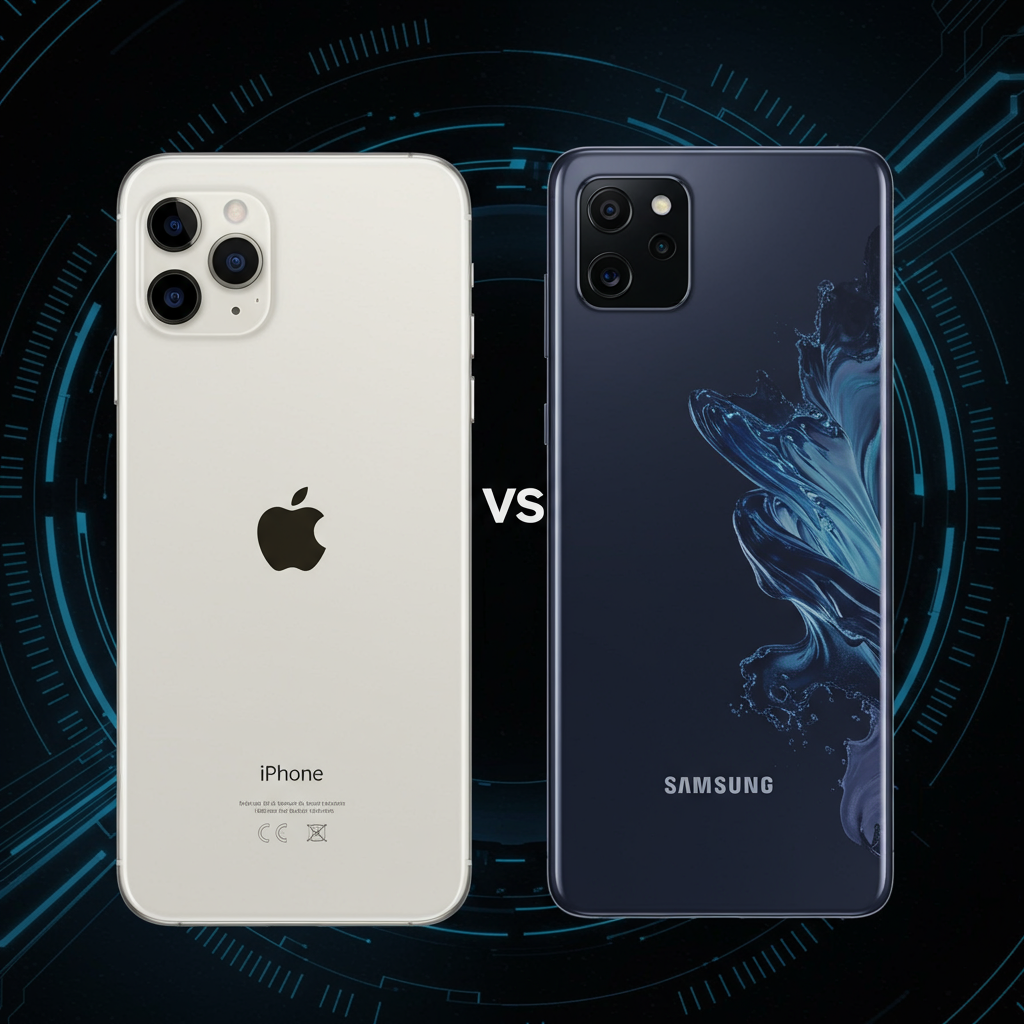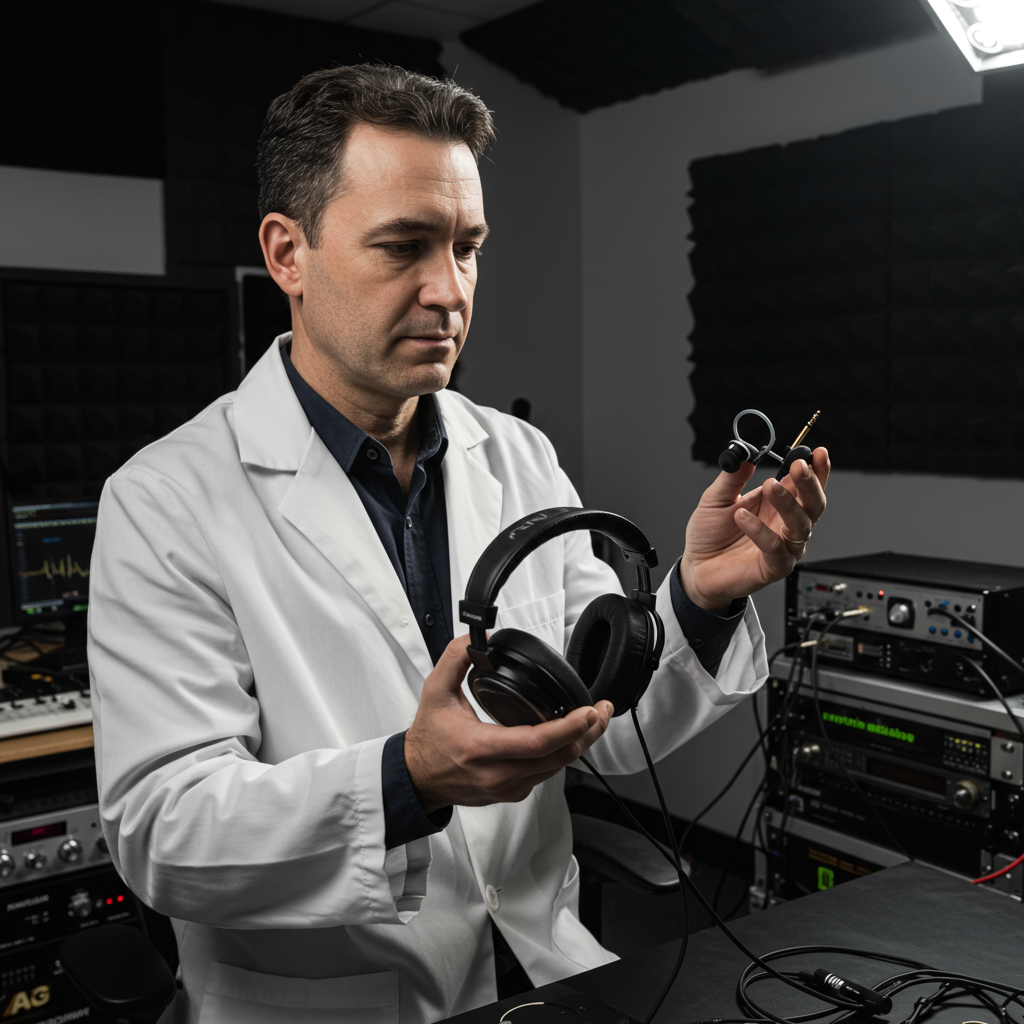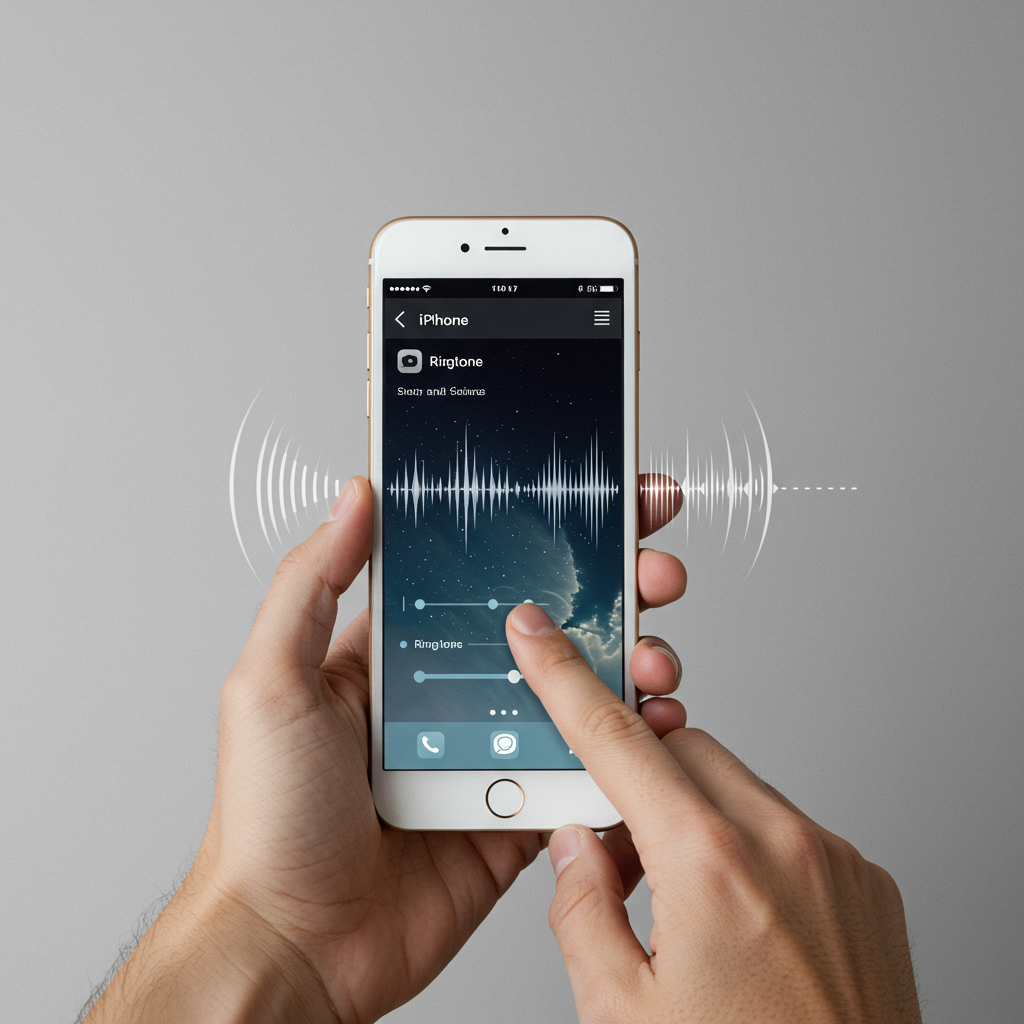For smartphone enthusiasts yearning for ultra-sleek designs, 2025 heralds a new era, epitomized by the direct confrontation between Apple’s groundbreaking iPhone Air and Samsung’s sophisticated Galaxy S25 Edge. These devices redefine modern flagships, prioritizing an incredibly thin profile over maximal features, yet still delivering potent performance. If you’re considering a departure from bulky phones, this comprehensive guide cuts through the noise, comparing every critical aspect from design and display to cameras, battery, and AI. Discover which thin titan truly offers the best balance of style, substance, and innovation for your mobile experience.
The Dawn of Ultra-Thin Flagships
The smartphone market has undeniably shifted. Reports indicate a growing trend where discerning buyers, initially drawn to feature-packed models like the iPhone 17 Pro, ultimately choose the surprisingly slim iPhone Air. Similarly, Samsung’s strategic tease of a thinner S25 model led to the highly anticipated Galaxy S25 Edge. This pivot towards svelte designs signals that for many users, form factor is now a paramount consideration. But does embracing extreme thinness come with unacceptable compromises, or have Apple and Samsung engineered a new generation of mobile excellence? This detailed comparison between the iPhone Air and the Galaxy S25 Edge unveils their strengths, weaknesses, and the nuanced trade-offs involved in achieving such refined forms.
Design and Dimensions: Pushing the Boundaries of Thinness
The defining characteristic of both the iPhone Air and Galaxy S25 Edge is their remarkable thinness, challenging conventional smartphone bulk. Apple proudly presents the iPhone Air as its slimmest device ever. Its main body measures an astonishing 5.64mm thick, excluding the distinctive “camera plateau” that houses its optical system. Crafted from highly polished titanium, the Air exudes a premium feel, protected by Ceramic Shield 2 on both front and back. It weighs in at 165 grams.
Samsung’s Galaxy S25 Edge follows closely, with a thickness of 5.8mm at its narrowest point. This device also features a lightweight titanium frame with smooth, flat edges, weighing a slightly lighter 163 grams. While the iPhone Air is technically thinner, the S25 Edge holds a marginal advantage in weight. Some reviewers note that the 0.2mm difference in thickness can be tactile, with the Air’s curvier chassis contributing to its “impossibly thin” perception, according to Android Central.
Despite their individual slenderness, an interesting paradox emerges when considering their combined thickness. Stacking both phones (again, excluding camera bumps) results in 11.44mm, which is actually thicker than many contemporary standard phones, including the iPhone 17 Pro Max (8.75mm). Surprisingly, this combined measurement harkens back to the original 2007 iPhone, which was 11.6mm thick. This highlights the industry’s significant progress in component miniaturization, even if carrying two of these sleek devices would be impractical. For those valuing the absolute thinnest profile, the iPhone Air slightly edges out the S25 Edge, while the S25 Edge offers a barely perceptible weight advantage.
Dazzling Displays: A Visual Feast
Both the iPhone Air and Galaxy S25 Edge offer stunning visual experiences, leveraging advanced OLED panel technology and adaptive 120Hz refresh rates for buttery-smooth interactions. However, they differ in size and brightness capabilities.
iPhone Air’s Super Retina XDR
The iPhone Air features a 6.5-inch OLED Super Retina XDR display, boasting a sharp resolution of 2,736 x 1,260 pixels, resulting in a pixel density of 460 ppi. What truly sets it apart is its impressive brightness range, from a minimum of 1 nit in darkness to a remarkable peak of 3,000 nits outdoors. This ensures exceptional visibility even in direct sunlight. However, the placement of its Dynamic Island and Face ID sensors is reportedly lower, creating a deeper, more obstructive pill-shaped cutout, as observed by Android Central.
Galaxy S25 Edge’s Dynamic AMOLED 2X
In contrast, the Galaxy S25 Edge packs a slightly larger 6.7-inch QHD+ Dynamic AMOLED 2X screen. It delivers a higher resolution of 3,120 x 1,440 pixels, yielding a denser 513 ppi. The S25 Edge’s peak brightness reaches 2,600 nits, which is still excellent but falls short of the iPhone Air’s extreme outdoor luminance. Samsung’s design choice for a much smaller, less intrusive hole-punch camera cutout is often preferred by users seeking an unblemished viewing area. While the S25 Edge offers a larger, higher-resolution display, the iPhone Air’s superior outdoor brightness gives it a distinct advantage for sun-drenched viewing.
Performance & Processing Power: Under the Hood
When it comes to raw processing might and system performance, both the iPhone Air and Galaxy S25 Edge pack the latest chipsets, albeit from different manufacturers and with slightly varied configurations.
Apple’s A19 Pro Powerhouse
The iPhone Air is driven by Apple’s cutting-edge A19 Pro processor, the same high-performance chip found in the flagship iPhone 17 Pro models. This 3nm processor is renowned for its exceptional efficiency and speed. While Apple doesn’t typically disclose RAM figures, expert analysis suggests the iPhone Air includes 8GB of RAM, deemed crucial for its new AI features like Apple Intelligence. Base storage starts at 256GB, with options extending to 512GB and 1TB. Tom’s Guide’s tests indicated the iPhone Air delivers superior single-core Geekbench scores and significantly faster video transcoding speeds. It runs on the freshly released iOS 26, deeply integrated with Apple Intelligence.
Samsung’s Snapdragon 8 Elite
The Galaxy S25 Edge employs the unbinned Snapdragon 8 Elite for Galaxy processor, identical to the one powering its siblings, the S25 and S25 Ultra. This chip is paired with a generous 12GB of RAM, providing robust multitasking capabilities. Storage options include 256GB and 512GB. While the iPhone Air leads in CPU and sustained performance benchmarks, the S25 Edge showed stronger graphics performance in tests like 3DMark Solar Bay Unlimited Graphics, according to Tom’s Guide. The S25 Edge comes preinstalled with Android 15 and Samsung’s One UI 7, enhanced by Galaxy AI features.
Ultimately, both phones offer top-tier performance for daily tasks, intensive gaming, and demanding applications. The choice between them in this category largely hinges on preference for iOS versus Android and whether raw CPU power (Air) or graphics prowess and more RAM (Edge) aligns better with your usage.
Camera Systems: Capturing the Moment
The camera configurations of the iPhone Air and Galaxy S25 Edge showcase differing philosophies: Apple’s refined single-lens approach versus Samsung’s versatile dual-lens system.
iPhone Air’s Intelligent Simplicity
The iPhone Air features a single, rear-facing 48-megapixel wide camera with a 26mm-equivalent field of view and a constant f/1.6 aperture. In its default mode, the camera produces 24-megapixel “fusion” photos, combining binned 12-megapixel data with a 48-megapixel reference for enhanced detail. Apple also claims it can achieve 2x-zoomed (52mm-equivalent) telephoto images at 12 megapixels through a clever sensor crop. While lacking a dedicated telephoto or ultrawide lens, Tom’s Guide found the iPhone Air generally delivered more natural colors and sharper details in most scenarios, particularly in low-light.
Its front-facing camera is particularly innovative: an 18-megapixel “Center Stage” unit with a unique square sensor. This allows it to adapt the aspect ratio for selfies or group shots without physically rotating the phone, automatically framing subjects for optimal composition.
Galaxy S25 Edge’s Dual-Lens Versatility
The Galaxy S25 Edge boasts a more traditional, yet highly capable, dual-camera setup on its rear. This includes a massive 200-megapixel wide main sensor and a 12-megapixel ultrawide lens. Like the iPhone Air, it offers a 2x-zoomed 12-megapixel crop, but without a dedicated telephoto camera. This dual-lens system provides greater photographic flexibility, enabling users to capture expansive landscapes or tighter shots with ease. Its front-facing camera is a standard 12-megapixel unit with a 4:3 aspect ratio sensor.
For sheer versatility and the option of ultrawide shots, the Galaxy S25 Edge takes the lead. However, for overall image quality, especially in challenging conditions, and a truly innovative front-facing camera, the iPhone Air proves to be a formidable contender despite its single rear lens.
Battery Life & Charging: Powering Your Day
The inherent trade-off with ultra-thin phones is often battery capacity, as less space means smaller power cells. Both the iPhone Air and Galaxy S25 Edge attempt to mitigate this, but with differing results and solutions.
iPhone Air’s Endurance & MagSafe Advantage
Apple doesn’t publicly state the iPhone Air’s exact battery capacity, but industry speculation, supported by Sammobile and HT Tech, suggests a cell around 3,149mAh. Apple promises “all-day battery life” and up to 27 hours of video playback. CNET’s review noted intensive use could drain the battery in 12 hours, but a more typical day often left 20% remaining. Crucially, the iPhone Air features integrated MagSafe and Qi2 support, enabling easy and quick magnetic charging. Apple also offers a dedicated iPhone Air MagSafe Battery add-on, which can extend runtime by over 5 hours. Both wired (20W) and wireless (20W) charging can achieve roughly 50% charge in 30 minutes. The seamless magnetic charging ecosystem is a significant convenience for a thin phone.
Galaxy S25 Edge’s Larger Cell
The Galaxy S25 Edge houses a larger 3,900mAh battery, with Samsung claiming up to 24 hours of video playback. Reviewers, including CNET, found that it generally lived up to Samsung’s “all-day battery life” boast, though acknowledging it requires nightly charging. The S25 Edge supports 25W wired fast charging and 15W wireless charging. A notable distinction, as highlighted by Android Central, is its lack of built-in Qi2 magnets, meaning magnetic charging requires a specialized case, potentially negating the very appeal of a thin phone.
While the Galaxy S25 Edge offers a larger battery capacity, the iPhone Air’s integrated MagSafe/Qi2 support provides a more convenient and efficient way to manage battery life for a device where every milliamp-hour counts.
Software and AI: Intelligent Experiences
Both Apple and Samsung are heavily investing in artificial intelligence, integrating advanced features into their latest operating systems to enhance user experience.
iOS 26 and Apple Intelligence
The iPhone Air ships with iOS 26, which introduces Apple Intelligence. This suite of features includes a “Liquid Glass” design, “Hold Assist,” and “Call Screening,” alongside significant improvements to Visual Intelligence for screenshots. A key development is the deep integration with ChatGPT, expanding its AI capabilities. While still relatively new, Apple Intelligence aims to make the iPhone Air more intuitive and responsive to user needs, making it a compelling choice for those embedded in the Apple ecosystem.
Android 15 and Galaxy AI
Running on Android 15 with Samsung’s One UI 7 (and One UI 8 on the horizon), the Galaxy S25 Edge boasts a comprehensive array of AI features under the “Galaxy AI” umbrella. This includes the “Now Bar” for instant information, “Now Brief” for AI-generated daily summaries, and “cross-app actions” via voice commands. Photographic enhancements like “Generative Edit” and “Audio Eraser” for videos are also present. Furthermore, the S25 Edge benefits from Google’s Gemini Live, offering advanced voice and visual search capabilities. Android Central also notes Samsung’s commitment to longer OS update guarantees, often exceeding Apple’s standard. The S25 Edge offers a richer, more extensive AI feature set out of the box, coupled with superior multitasking capabilities like two apps on screen and DeX desktop mode.
Pricing and Value: What You Pay for Slimness
The entry cost for these ultra-thin flagships reflects their premium design and cutting-edge technology, though with some differences.
The iPhone Air starts at $999 for the 256GB model. This pricing strategy aligns with Apple’s historical approach of applying a premium for significantly thin designs, reminiscent of the original MacBook Air. The iPhone Air effectively replaces the iPhone 16 Plus in the lineup, offering a larger display than the standard iPhone 17.
The Galaxy S25 Edge carries a slightly higher starting price of $1,100 for its 256GB variant. Samsung positions this as a distinct offering within the S25 lineup, targeting customers who desire exclusivity. However, the market has already seen occasional steep discounts, with some retailers offering drops of $300 or more, suggesting that patient buyers might find better deals. Both phones’ initial pricing has reportedly held up against recent tariff impacts. For those seeking the slimmest design at a slightly lower entry point, the iPhone Air holds an advantage.
Frequently Asked Questions
What are the main compromises users should expect when choosing an ultra-thin smartphone like the iPhone Air or Galaxy S25 Edge?
While offering unparalleled aesthetics, ultra-thin phones like the iPhone Air and Galaxy S25 Edge typically involve some trade-offs. The most significant is often battery capacity, as reduced internal space limits battery size, potentially leading to shorter “all-day” usage compared to bulkier models. Camera systems can also see compromises; the iPhone Air, for instance, has a single rear camera (though high quality), lacking the versatility of multiple lenses found in larger phones. Integrated features like a headphone jack are absent, and overall durability, despite robust materials, might feel less substantial than thicker, heavily armored devices.
Which of the two thin phones, iPhone Air or Galaxy S25 Edge, offers a more versatile camera system for different shooting scenarios?
The Samsung Galaxy S25 Edge generally offers a more versatile camera system due to its dual-camera setup on the rear. It includes a high-resolution 200-megapixel wide sensor alongside a 12-megapixel ultrawide lens, providing users with options for expansive landscape shots or fitting more into the frame. While the iPhone Air’s single 48-megapixel camera performs exceptionally well and features an innovative “Center Stage” front camera, its lack of a dedicated ultrawide or optical telephoto lens means less flexibility in composition compared to the S25 Edge’s broader range of perspectives.
For users prioritizing integrated magnetic charging and sustained performance, is the iPhone Air or Galaxy S25 Edge the better choice?
For users prioritizing integrated magnetic charging, the iPhone Air is the clear winner. Its built-in MagSafe and Qi2 support allows for seamless, convenient magnetic power top-ups without needing a special case. In terms of sustained performance, the iPhone Air, powered by Apple’s A19 Pro chip, demonstrated better stability over extended periods and higher single-core CPU performance in various benchmarks. While the Galaxy S25 Edge has a larger battery and strong graphics performance, its lack of built-in Qi2 magnets and slightly lower sustained CPU performance make the iPhone Air more appealing for these specific priorities.
Conclusion: The Thin Line Between Form and Function
The “thin phone battle” between the iPhone Air and Galaxy S25 Edge is not just a contest of specifications; it’s a testament to the evolving priorities of smartphone users. Both devices brilliantly showcase engineering prowess, offering stunningly svelte designs without sacrificing too much performance.
The iPhone Air stands out for its extreme thinness, superior outdoor display brightness, cutting-edge A19 Pro processor for sustained performance, and the seamless convenience of integrated MagSafe/Qi2 charging. Its innovative Center Stage front camera also offers a unique user experience. It’s a choice for those who crave the absolute slimmest form factor and are deeply invested in the Apple ecosystem, willing to accept a single-lens rear camera for the overall aesthetic.
Conversely, the Galaxy S25 Edge appeals to users seeking a slightly more balanced and versatile ultra-thin experience. It boasts a larger, higher-resolution display with a less intrusive camera cutout, a more robust dual-camera system for diverse photography, a larger battery capacity, and a broader suite of AI features powered by the Snapdragon 8 Elite. It’s an ideal choice for Android aficionados who value camera versatility, extensive AI functionalities, and a slightly lower weight, even if it means foregoing integrated magnetic charging.
Ultimately, the decision between the iPhone Air and Galaxy S25 Edge hinges on your personal priorities. Do you covet the absolute thinnest design and Apple’s powerful, integrated ecosystem? Or do you lean towards a slightly larger display, more camera versatility, and Samsung’s comprehensive AI features? Whichever you choose, both represent a refreshing and compelling direction for the future of mobile technology, proving that you no longer have to sacrifice style for smarts.




